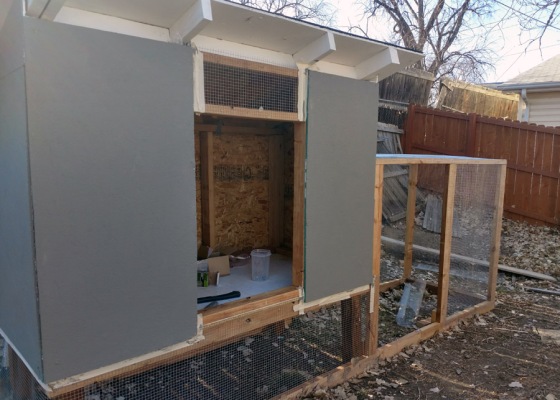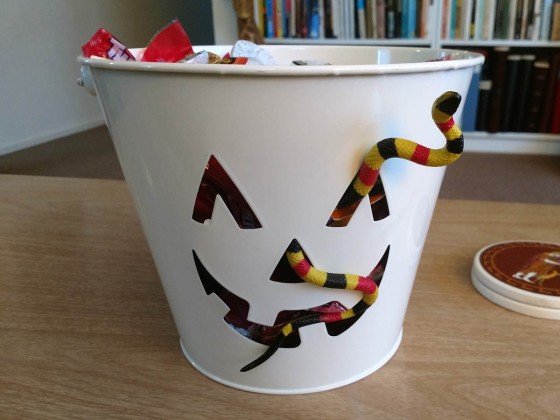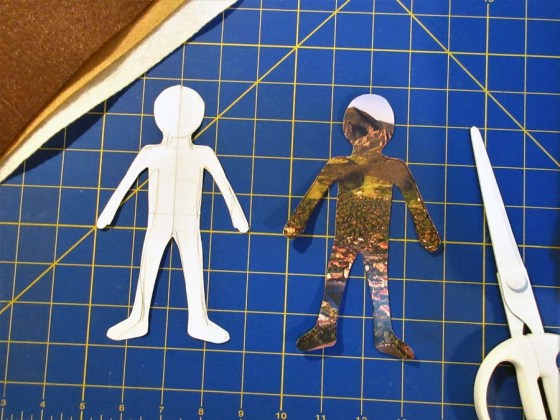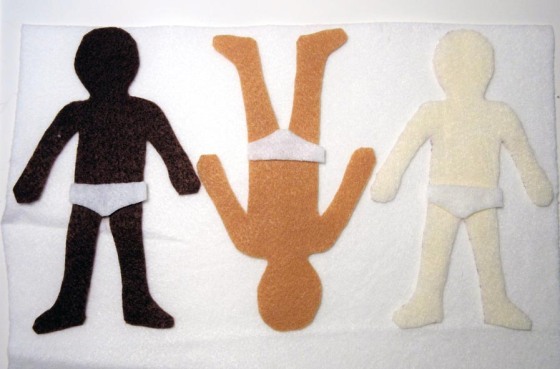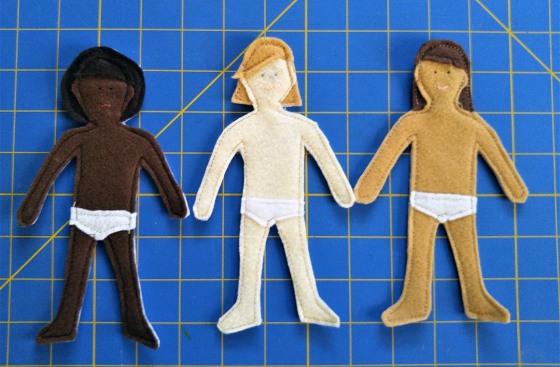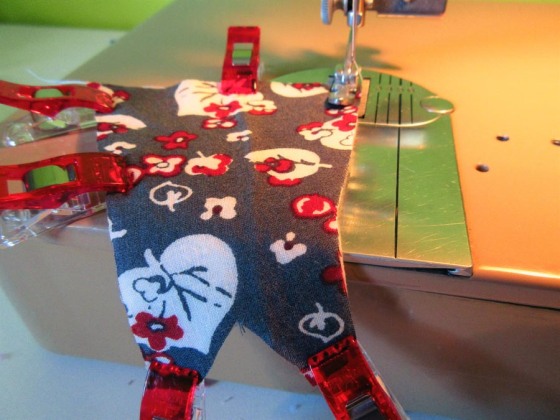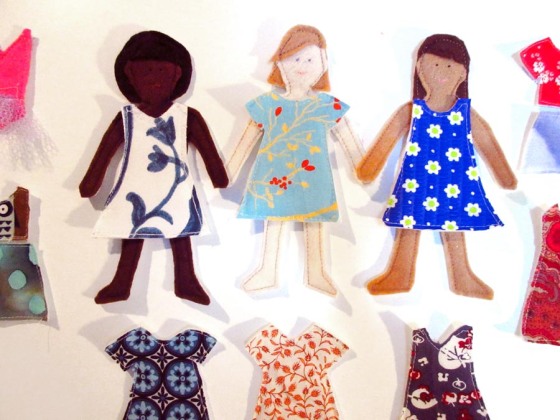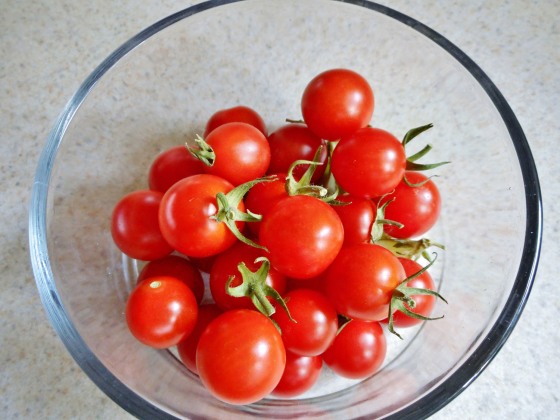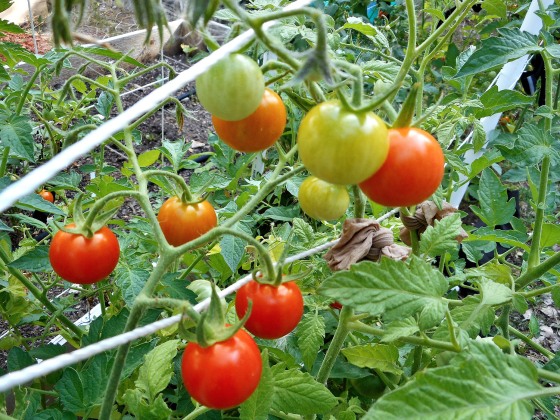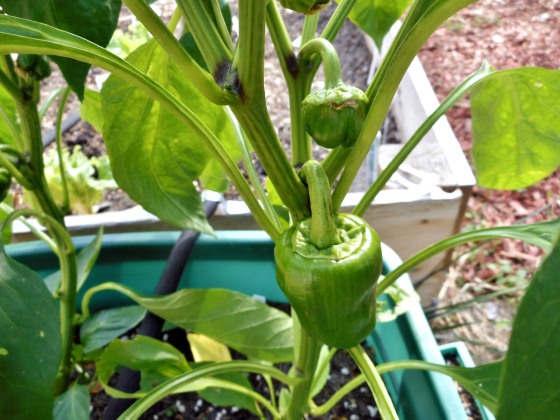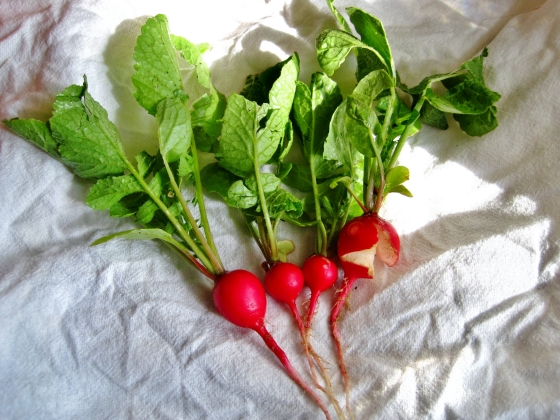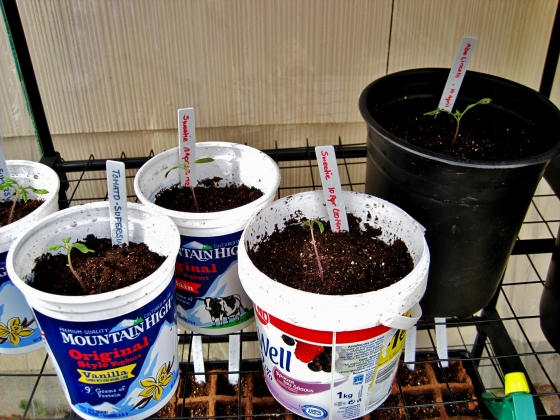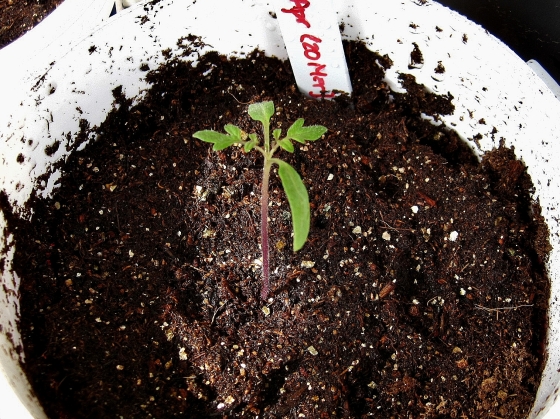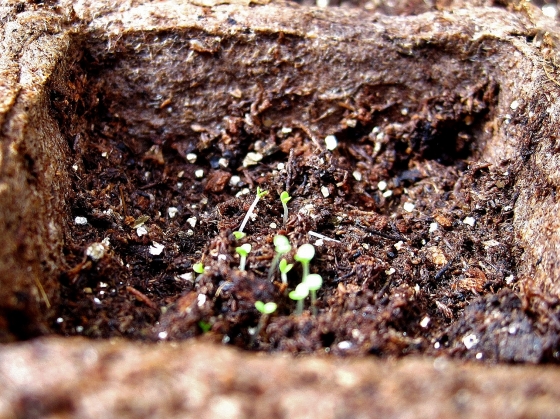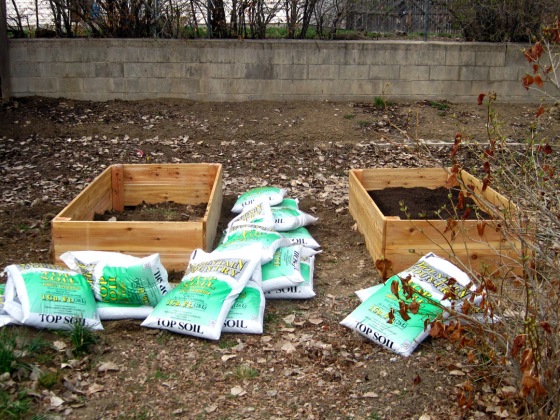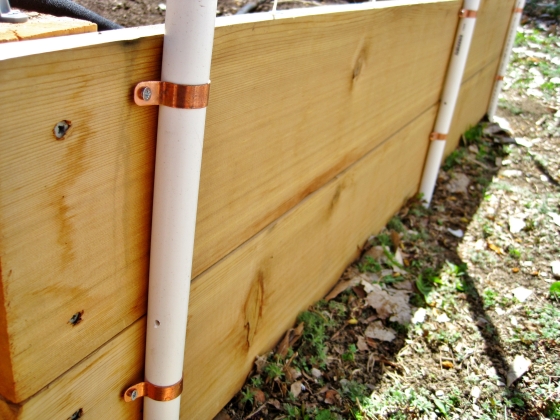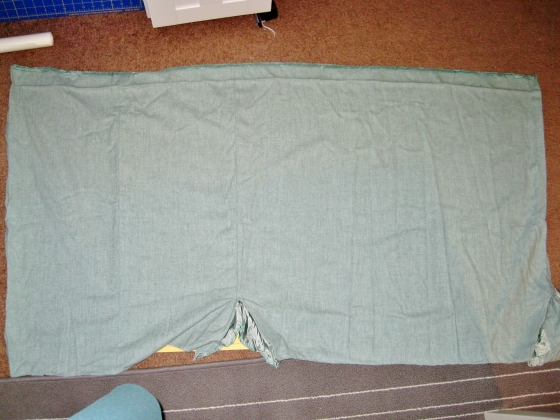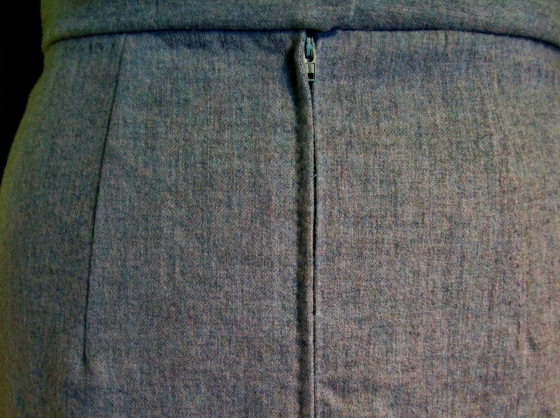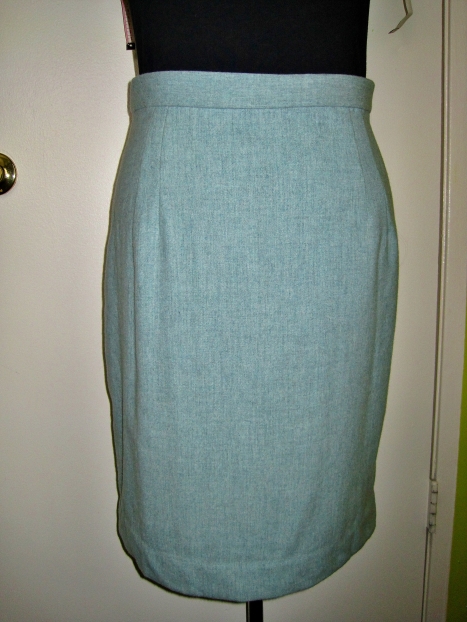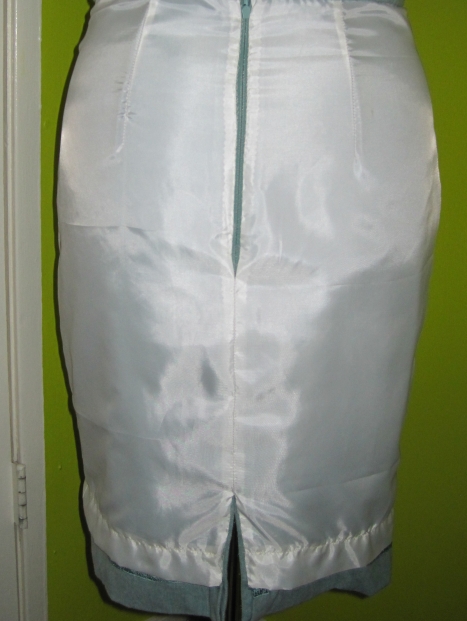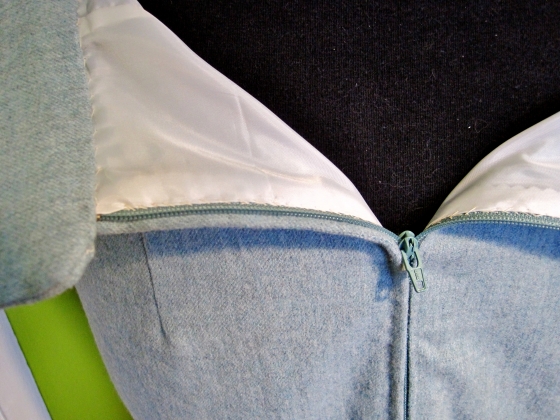I recently got a tiered circle skirt at an estate sale for a dollar or two. It seems to be a square dance skirt and is made of sturdy cotton. I did wear it once as-is, but it was a bit long on me and I was not a fan of the natural cotton color.

I promise it wasn’t this wrinkled when I wore it.
The light color also made it a bit more sheer than I prefer.

My first step in the transformation of this skirt was to remove the lowest tier. This took forever–there is a LOT of fabric in this skirt. Removing the bottom foot or so of fabric made it a lot less overwhelming in length and weight. The next step was deciding on a color to dye it. I thought about a nice bright cobalt or deep red, but since the skirt style is a little out of my comfort zone anyway, I decided to go with black so it would blend in with the rest of my wardrobe. Finally, I sewed up the hem using another estate sale find, this beautiful vintage Necchi sewing machine.

I bought regular old Rit dye from the supermarket–I chose the liquid version and followed the instructions for adding salt and dish soap. Unfortunately I didn’t do it perfectly, because it came out as a dark purplish-blue.
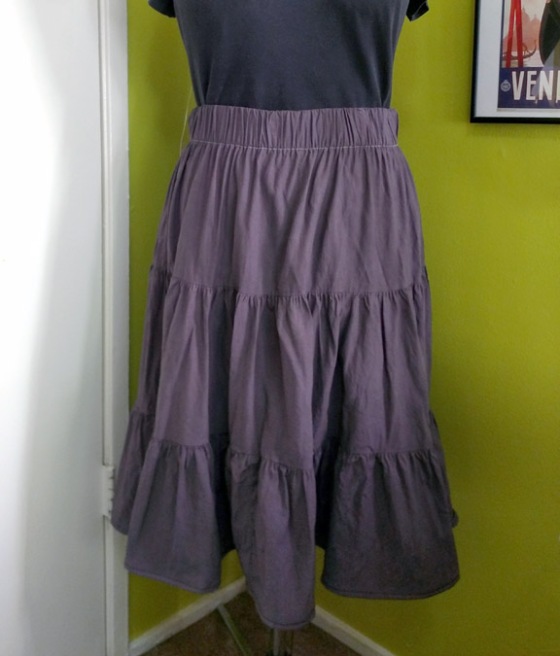
I do kind of like this color, though, so I’m debating whether to redye it to get the deep black I wanted or to leave it like this.
I also took the opportunity to dye another estate sale find. I purchased some pale peach silk culottes for a couple of dollars, thinking that if I didn’t wear them (again, a bit out of my comfort zone), I could use the silk for another project. I did end up wearing them twice, but was not in love with the color. Here is a bad mirror selfie to give an idea of what they originally looked like.
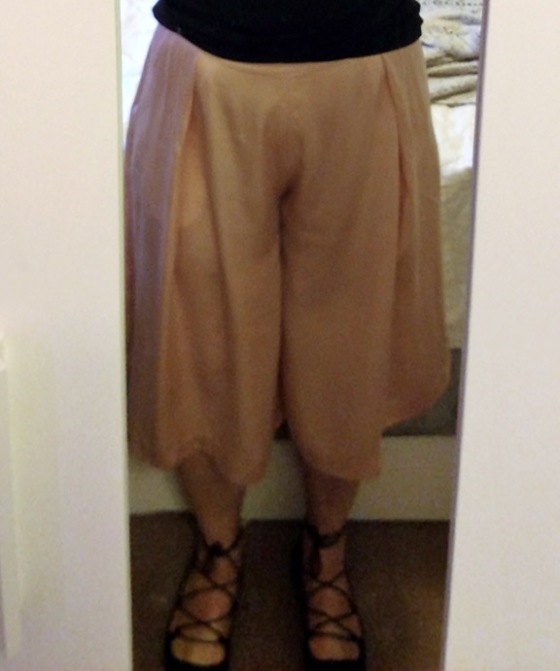
I was a bit nervous about dying silk so I read a bunch of tutorials. I used black Rit dye for these as well, but ended up loving the deep purplish-blue color that they turned partway through the process.
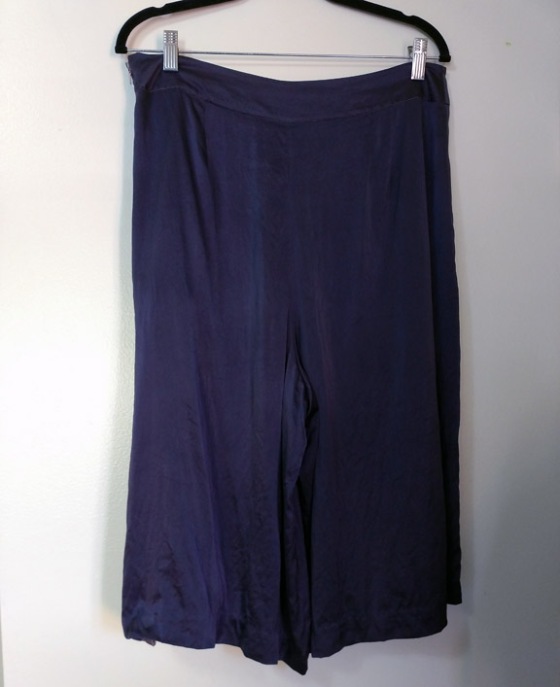
I can’t believe how beautiful they are now and I can’t wait to wear them!
I also dyed a white shirt that I bought on Amazon and stained with tea the first day I wore it. Who would have thought that $3 bottles of dye could be so much fun?




